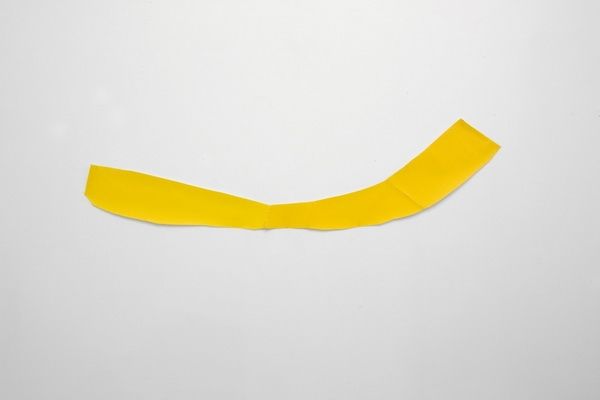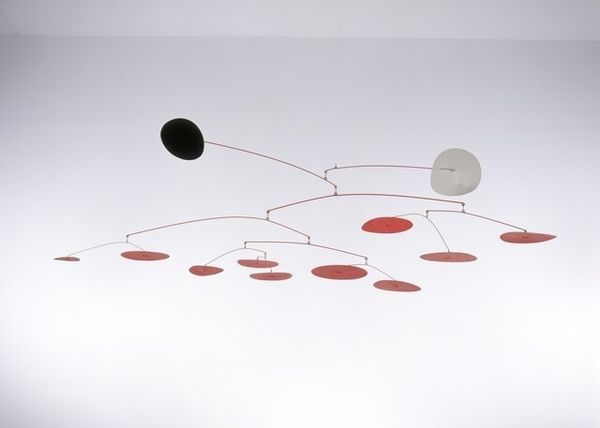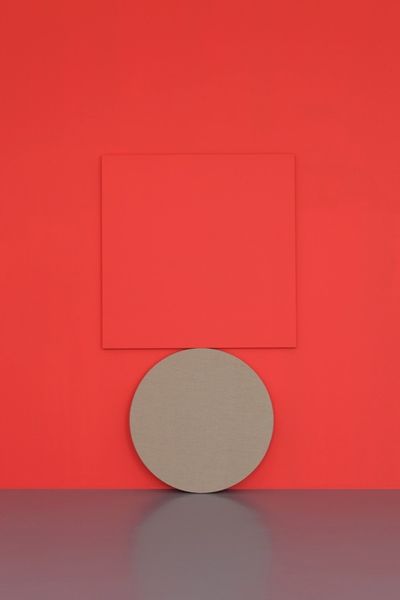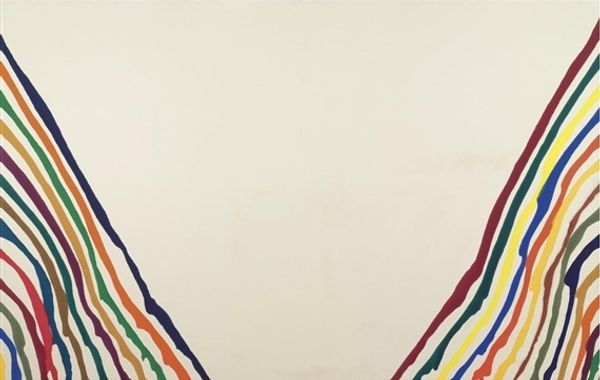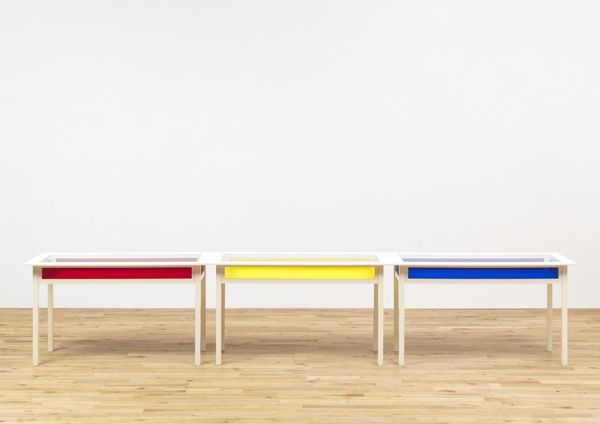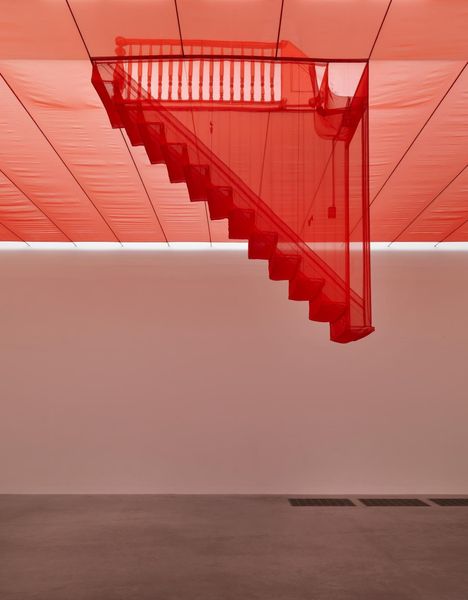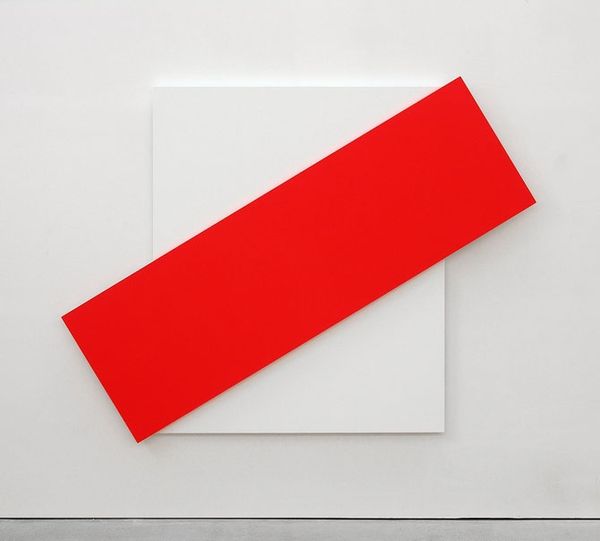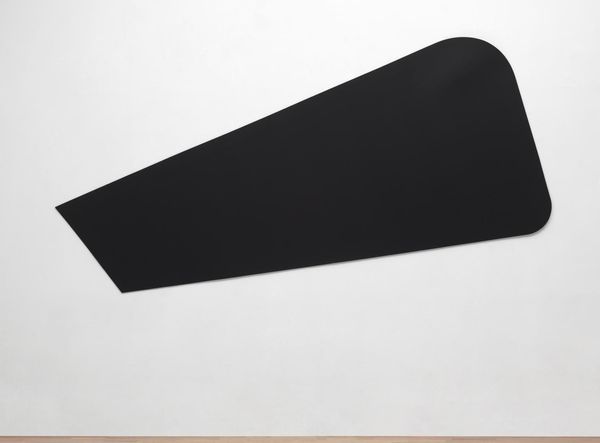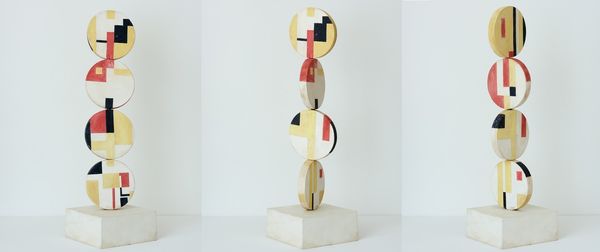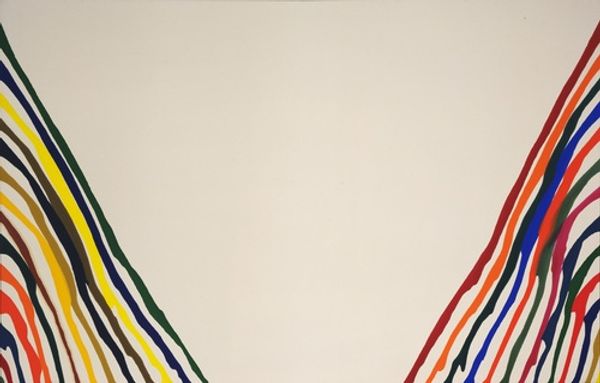
matter-painting, acrylic-paint
#
acrylic
#
matter-painting
#
minimalism
#
acrylic-paint
#
geometric
#
process-art
#
abstraction
#
line
Copyright: Pino Pinelli,Fair Use
Editor: This is "Pittura R" by Pino Pinelli, made in 1986. It looks like several red, pill-shaped forms ascending diagonally across a white wall. The simplicity is striking. How would you interpret this work? Curator: It's tempting to view Pinelli's work as purely formal, an exercise in color and shape. But situated within the Italian art scene of the 1980s, "Pittura R" participates in a larger dialogue about the role of painting itself. Think about Arte Povera's critique of traditional art materials and the growing commercialization of the art world at the time. How might this simple arrangement be a subtle commentary? Editor: Maybe the repetition suggests a mass-produced object, a comment on commercialization? And the bright red almost feels like a warning sign. Curator: Exactly. It's worth considering how institutions like galleries and museums shape what we perceive as "art." What is legitimized, and how does that influence artistic production? Also, do you think the choice of vibrant color plays a role in either defying or fitting into trends of art reception? Editor: That makes me think about how the seemingly arbitrary arrangement – the upward slant, the spacing – might actually be a deliberate disruption of established norms of what is deemed high art, kind of like a quiet rebellion through minimalist form. Curator: Precisely! By challenging conventions, Pinelli forces us to confront not just what art is, but also where and how art gets its power. And importantly, whose power? Editor: I never considered minimalist work as having such social commentary, that really expands how I see pieces like this. Curator: Absolutely. Seeing art through the lens of its time can be illuminating. Now, where might you want to look next?
Comments
No comments
Be the first to comment and join the conversation on the ultimate creative platform.


